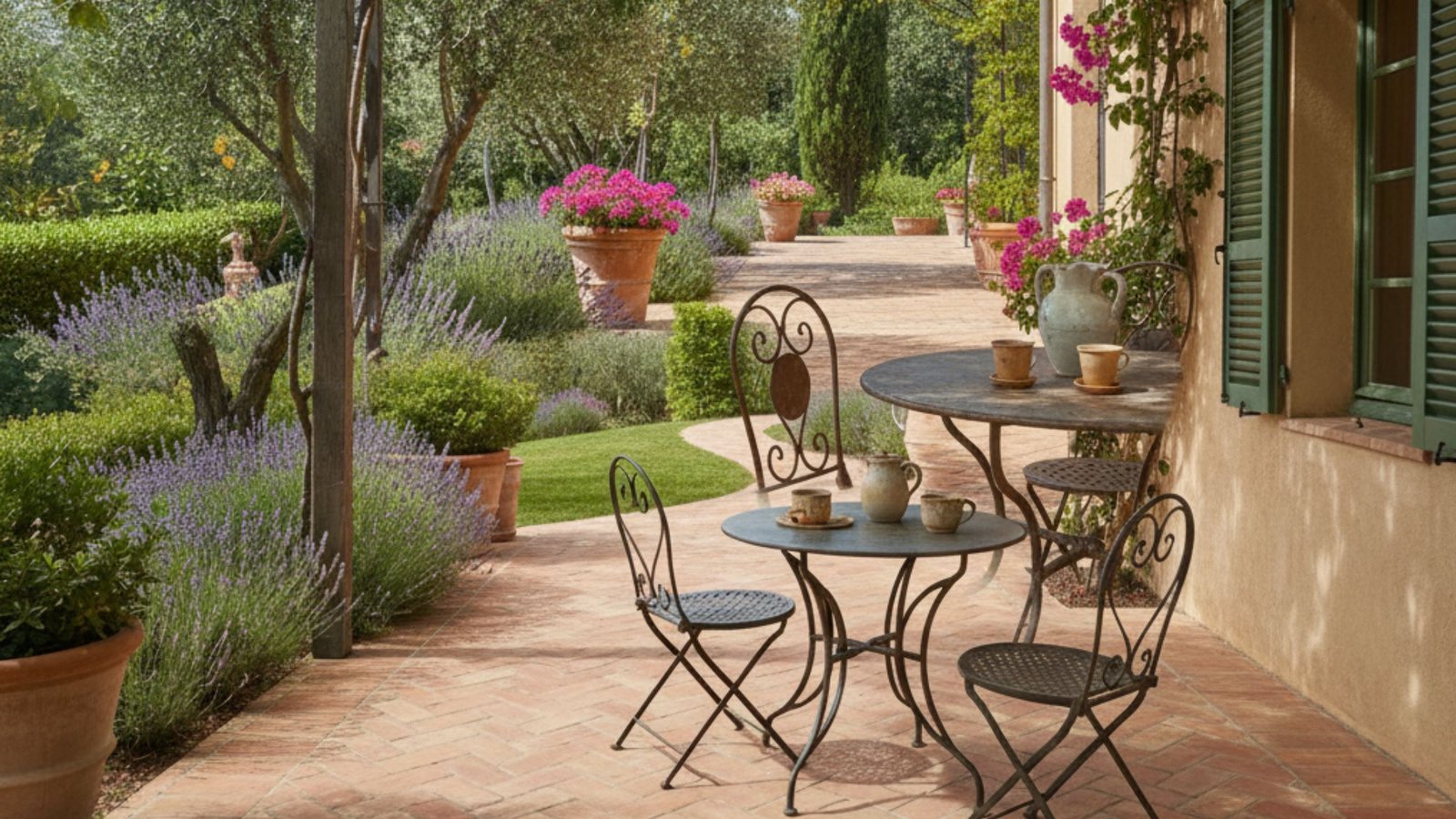In recent years, handcrafted terracotta tiles have seen a remarkable revival in modern architecture and garden design – especially in projects that combine natural materials, functionality, and timeless aesthetics. Whether you’re an architect creating high-quality interior and exterior spaces, or a homeowner looking for an authentic and long-lasting design element for your home, understanding the characteristics and proper use of this material is essential.
In this comprehensive guide, you’ll find everything you need to know about using handcrafted terracotta tiles outdoors. We explain their technical properties, professional installation principles, aesthetic and stylistic integration, and practical maintenance tips for decades of durability. All insights are based on the natural qualities of clay, traditional craftsmanship, and current building standards for outdoor applications.
Frost Resistance and Weather Durability – What’s True and What’s Not?
One of the most common questions concerns frost resistance. Terracotta is a porous material and therefore absorbs moisture – which can potentially lead to damage when temperatures drop below freezing. However, this risk can be largely eliminated if the material is properly installed and protected.
When the tiles are laid on a slightly sloped surface (at least a 2% gradient) to allow rainwater to drain off, and when flexible, frost- and water-resistant adhesives and grouts are used, the risk of damage is significantly reduced. Applying a professional-grade impregnating sealant further minimizes water absorption. It’s not the clay itself that cracks – it’s frozen water trapped inside an unprotected material. As long as moisture is kept out, the structure of the terracotta remains perfectly intact.
Discover Protection Tips → Long-Lasting Protection for Generations – How to Properly Seal Terracotta Tiles
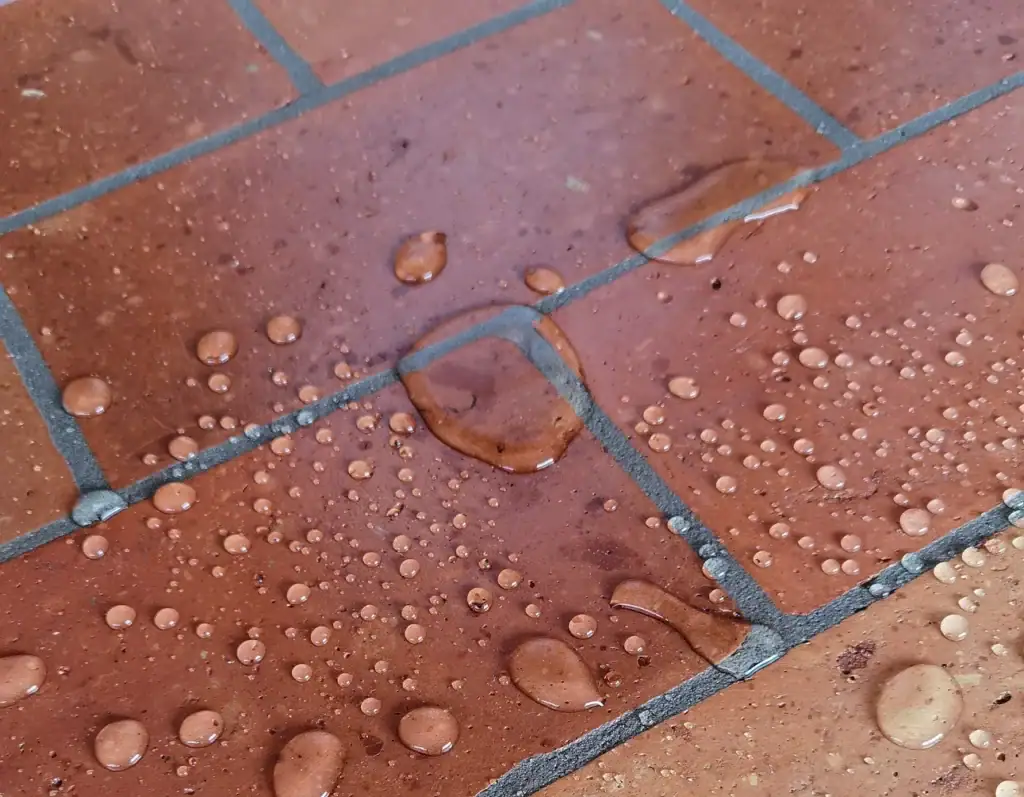
At Cotto Rustic, we pay special attention to firing each batch of tiles differently depending on their intended use. For outdoor applications, we increase the firing temperature to over 1000 °C, which reduces porosity and increases mechanical strength. Our tiles have also been laboratory-tested without any impregnation, undergoing more than 50 freeze–thaw cycles down to –10 °C without any structural changes. This provides our customers with an extra level of assurance and confidence in their long-term durability.
Aesthetics and Visual Integration in Outdoor Spaces
Colors & Surfaces
Handcrafted terracotta tiles are not only durable but above all atmospheric. Their warm, natural appearance can hardly be compared to industrial materials. Whether in a rustic country house, a Mediterranean courtyard, or on a minimalist rooftop terrace – terracotta tiles blend in harmoniously without appearing dominant.
The color nuances arise solely from the natural composition of the clay and the firing temperature – no artificial pigments are used. As a result, the colors remain permanently stable, even under intense sunlight. At Cotto Rustic, we offer tiles made from pure yellow clay as well as delicate rose-colored variations created by blending red and yellow earth.
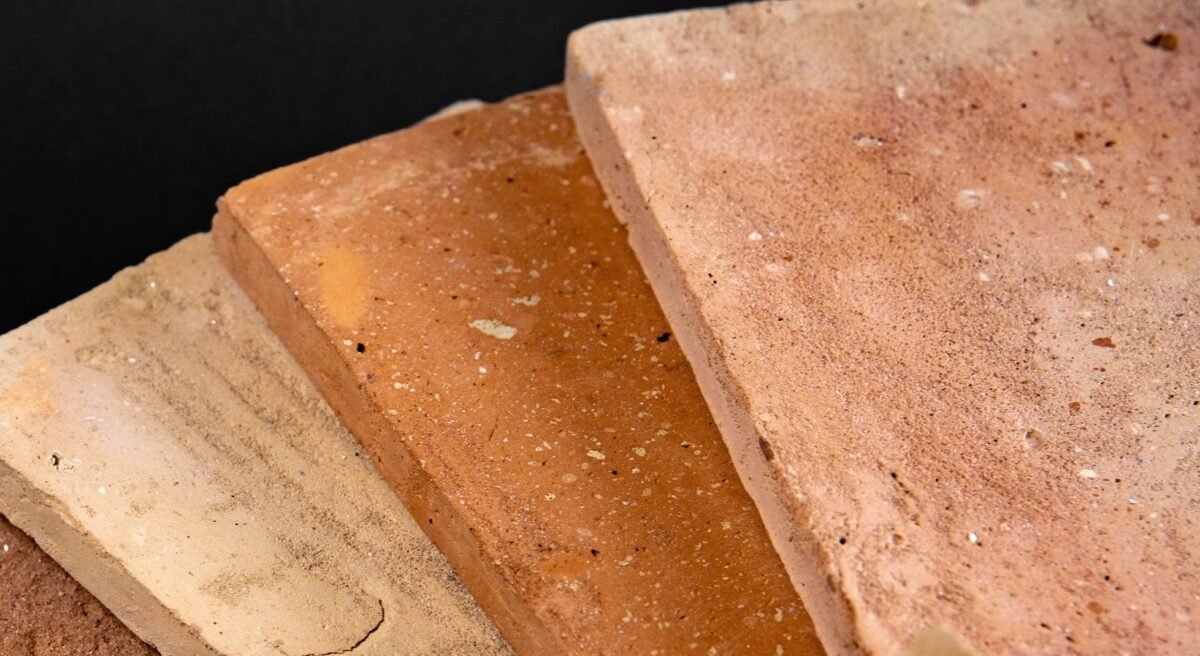
Irregular edges, subtle surface variations, and the distinctive traces of handcrafting create a lively, tactile floor appearance. This organic imperfection gives spaces depth – the tile becomes more than just a surface; it turns into a design element with soul.
Formats & Design
In addition to color and surface texture, the format and dimensions of the tiles play an important role in the visual effect and functionality of outdoor areas. Square formats such as 20×20 cm and 24×24 cm terracotta tiles are often used for compact terraces and courtyards, while rectangular formats such as 30×15 cm or 25×12.5 cm are ideal for pathways, elongated surfaces, or combined laying patterns.
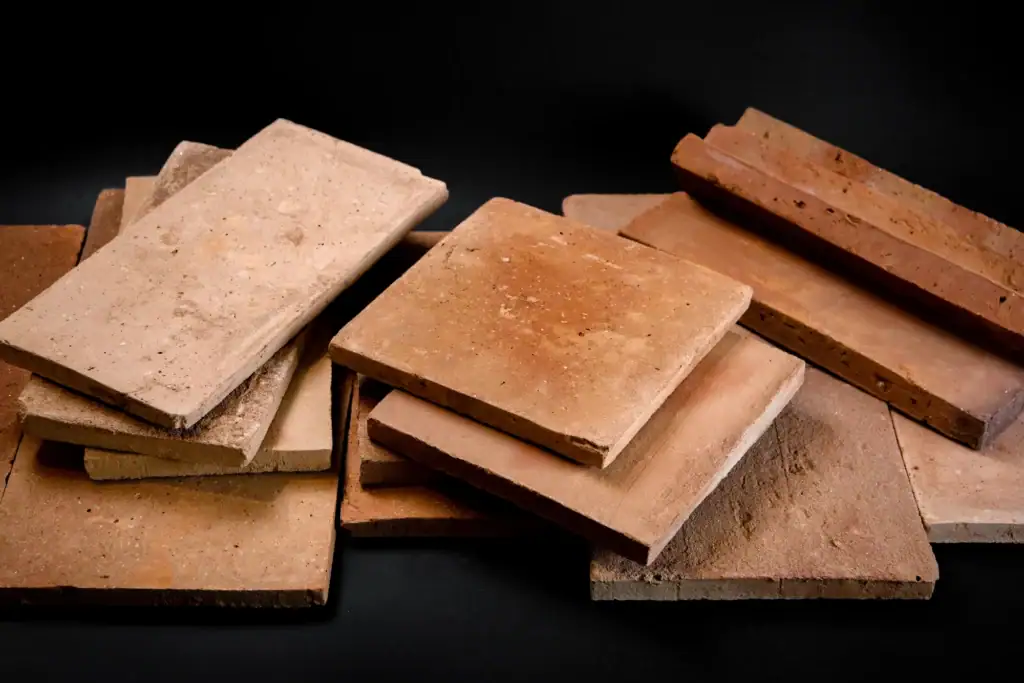
For larger surfaces, it is advisable to use bigger tile formats to create a balanced sense of space and avoid an overly fragmented joint pattern. Smaller tiles can add more visual dynamism to outdoor areas, while larger formats convey calmness and spaciousness. Special shapes such as hexagons or circles also influence the character of a surface and are often used as distinctive design accents.
In addition to our standard formats, we also offer the option to produce custom-made terracotta tiles in specific shapes, dimensions, and thicknesses – providing greater design freedom and perfect adaptation to individual project requirements.
Terracotta Tiles on Exterior Walls and Facades
Terracotta is not only suitable for flooring – for centuries it has also been used to clad walls and facades. Its natural color tones and texture lend exterior surfaces warmth and character, whether it’s a rustic country home, a Mediterranean villa, or a contemporary building. Handcrafted tiles add vibrancy and authenticity and are often used on terraces, garden walls, or freestanding exterior surfaces.
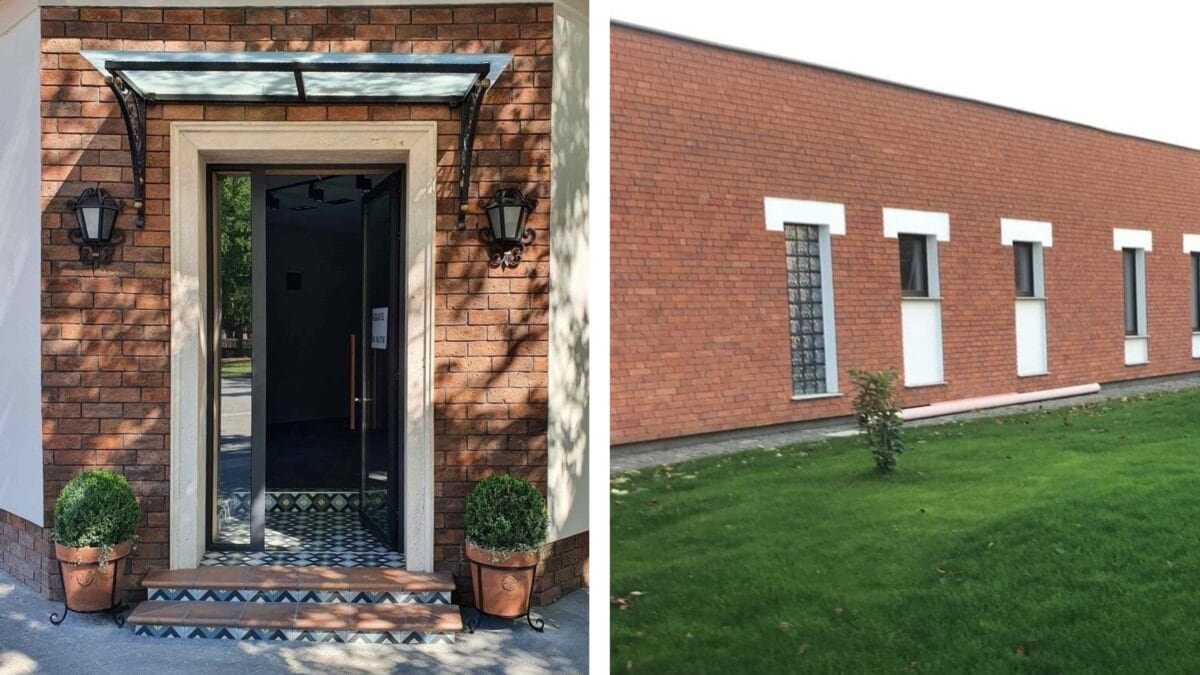
In contemporary architecture, terracotta is also widely used for facades. It can be applied as a
Narrower formats, known as terracotta slips, are particularly popular for wall cladding. They create a rhythmic and elegant look and are often used for facades or decorative exterior walls. In our collection, for example, we offer the 26×6 cm brick slips format – distinguished by its artisanal character and perfectly suited to both traditional and modern architectural concepts.
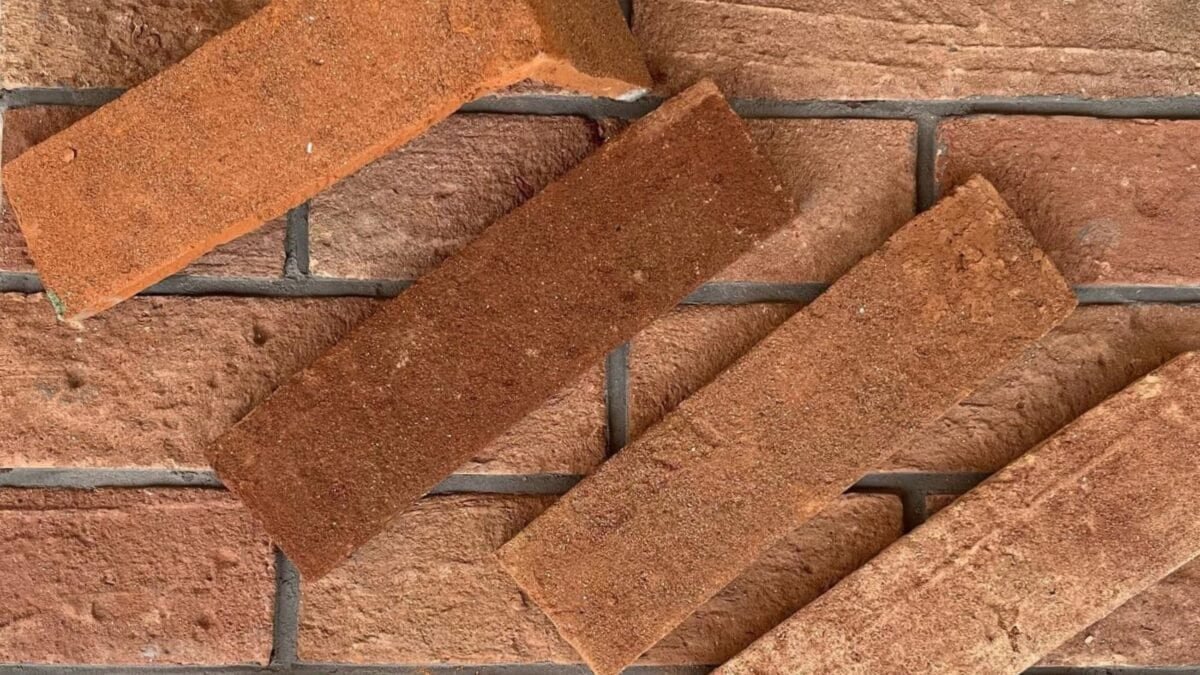
As with flooring, proper sealing and the use of high-fired tiles are essential for wall cladding to ensure resistance to moisture, frost, and UV radiation. In addition to standard formats and colors, custom-made solutions are also available – in individual shapes, sizes, and thicknesses – allowing every project to be executed optimally and uniquely.
Learn more about facade applications → Terracotta Facades – Handcrafted Terracotta Slips as a Sustainable Cladding Solution
Professional Installation – The Foundation for Long-Term Durability
The quality of installation is just as important as the material itself. Problems often arise from insufficient substrate preparation, the wrong adhesive, or missing impregnation – not from the material.
A stable, level, and load-bearing substrate with a clearly defined slope is the foundation. Ideally, a cement screed slab with at least a 2% slope should be used. For installation, we recommend a flexible, waterproof outdoor adhesive. For porous materials like terracotta tiles, the so-called “buttering-floating” method is ideal: adhesive is applied both to the substrate and the back of the tile to prevent any hollow spaces.
The joint width depends on the tile format and dimensional tolerances – usually between 5 and 10 mm. A flexible, frost-resistant grout provides additional protection against tension caused by temperature fluctuations.
After grouting, the most important step follows: impregnation. A high-quality sealing product penetrates deeply into the material, creating an invisible protective barrier against water, grease, and dirt – while preserving the natural look of the surface. Depending on weather exposure and usage, the impregnation should be renewed every 2 to 4 years – a quick and straightforward process.
Learn more about tile installation → How to Install Terracotta Tiles – Step-by-Step Guide
Care and Maintenance – Natural, Yet Regular
Terracotta tiles are easy to maintain when a few basic rules are followed. Cleaning should ideally be done with water and a mild, pH-neutral cleaner. Strong acidic or chemical products should be avoided, as they can damage the protective layer.
In autumn and winter, it is advisable to regularly remove leaves, soil, and other organic residues, as these retain moisture and can cause discoloration. On open terraces without a roof, a seasonal cover can provide extra protection. In our experience, well-maintained terracotta surfaces retain their beauty for many years – and even gain more character over time through their natural patina.
Who Are Handcrafted Terracotta Tiles Perfect For?
Handcrafted terracotta tiles are not mass-produced products for quick fixes. They are made for people who design consciously – for architects who create spaces with atmosphere and for homeowners who value quality, sustainability, and tactile, natural materials.
Outdoor terracotta tiles combine durability with beauty – they are pleasantly warm underfoot, safe to walk on, visually inviting, and full of tactile character. Their uniqueness lies in their natural imperfection – in the traces of craftsmanship, the depth of the material, and the subtle play of light and color.
If you’re looking for a floor that lives with you, ages gracefully, and tells a story over time, handcrafted terracotta tiles are the perfect choice.
Consultation & Inspiration
Are you planning an outdoor space with handcrafted terracotta tiles?
We offer personal consultation on formats, maintenance, and technical details – ensuring your project stands the test of time and retains its natural beauty for decades to come.
👉 Get in Touch
👉More About Our Terracotta Tiles
Frequently Asked Questions About Outdoor Terracotta Tiles
Are handcrafted terracotta tiles frost-resistant when used outdoors?
Yes – provided they are professionally installed and properly protected. The key factors are a sufficient slope (at least 2%), a frost- and water-resistant adhesive, and a high-quality impregnating sealant. As long as moisture is kept away from the material, the structure remains permanently intact – even after many freeze-thaw cycles.
How often should outdoor terracotta tiles be sealed?
The sealant should be renewed every 2 to 4 years, depending on exposure to weather and use. After winter, it’s a good idea to check the surface and reapply if necessary. A proper seal not only protects against moisture but also makes cleaning easier.
How to properly clean terracotta tiles without damaging their surface?
The best way is to use water and a mild, pH-neutral cleaner. Avoid acidic or harsh chemical products, as they can damage the protective layer. In autumn and winter, regularly remove leaves and dirt to prevent moisture buildup and staining – this way, the natural patina of the tiles is preserved.
